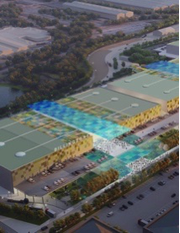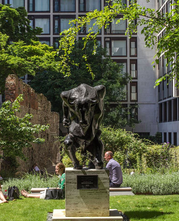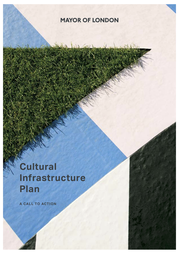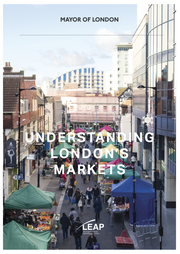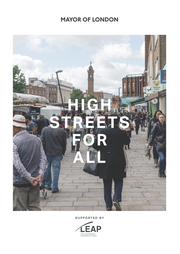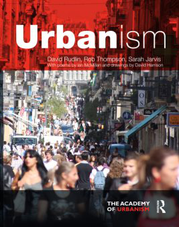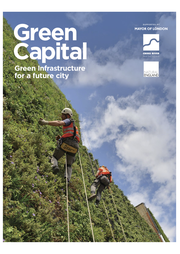Tower cranes are a long-familiar sight on our city skylines but are there still new lessons to be learned about the way development is coordinated? Manhattan and Bankside have been finding that communication might be the answer.
The world’s greatest cities are constantly renewing, and London and New York are no exception. But the logistics of developing tightly bounded sites in the heart of capital cities is complex.
In historic neighbourhoods like Bankside in London and Lower Manhattan in New York it’s not just the schedules and margins that are tight, so are the street patterns. And these neighbourhoods carry on functioning 24/7, regardless of the concrete mixers and muck away trucks that need to roll in and out, day …
+
Tower cranes are a long-familiar sight on our city skylines but are there still new lessons to be learned about the way development is coordinated? Manhattan and Bankside have been finding that communication might be the answer.
The world’s greatest cities are constantly renewing, and London and New York are no exception. But the logistics of developing tightly bounded sites in the heart of capital cities is complex.
In historic neighbourhoods like Bankside in London and Lower Manhattan in New York it’s not just the schedules and margins that are tight, so are the street patterns. And these neighbourhoods carry on functioning 24/7, regardless of the concrete mixers and muck away trucks that need to roll in and out, day after day.
Taking time to learn lessons from each other, while great in theory, can be difficult to achieve in practice. But on Bankside this challenge has been embraced and in February members of the Bankside Logistics Group initiated a live transatlantic web conference with their colleagues at the Lower Manhattan Construction Command Center to discuss progress and exchange advice.
The LMCCC is a public body, established in 2004 by New York Governor Pataki and Mayor Michael Bloomberg to coordinate more than $20bn of development focusing on the World Trade Center site, together with all projects worth more than $25million south of Canal Street. Its mission is to facilitate construction activities, mitigate their impacts on the community and communicate with the public about the works.
Bankside Logistics Group (BLG) is a more varied collective, set up in 2008 by Better Bankside Business Improvement District CEO Peter Williams, its Chairman Donald Hyslop of Tate Modern and Southwark Council’s development team manager Dan Taylor. Its aims, however, are somewhat similar: to mitigate the disruption from a cluster of large-scale construction sites that are on-site simultaneously in this historic part of the capital. With contractors, project managers and council officers meeting every month to discuss progress, the aim is to keep channels of communication open and potential difficulties ironed out.
Crucially, BLG members come from both the private and public sectors and include cultural institutions Tate Modern and Shakespeare’s Globe, private sector developments at NEO Bankside, the Shard and London Bridge Quarter, and Network Rail’s projects at Blackfriars and Borough Viaduct, as well as council officers working in local job creation, permissions and environmental health. Together the projects represent £4billion in investment and will generate 4.500 construction jobs and 15,000 permanent jobs.
The BLG projects will not only add to the local street- and skyscape of the borough of Southwark but will also have a much wider impact – Tate Modern is London’s second biggest tourist attraction with about two-fifths of its annual visitors coming from overseas, while the completed Shard will be the tallest building in Europe.
As well as creating a unique forum for the private and public sector partners, BLG aims to offer clear and useful communication with the wider community. The success of this approach was acknowledged in 2010 when Better Bankside won the Mayor of London’s Best Partnership Award for its work with BLG. The judges remarked on the "excellent communications strategy ensuring stakeholders are aware of major infrastructure developments in the area”.
The group communicates through its distinctive ‘dbrief’ publications. Four times a year an illustrated newsletter reports on the upside of the developments – from new jobs for local residents and archaeological discoveries on show in the Museum of London, to investigations into sustainable construction methods and interviews with contractors, council officers and residents.
Every month an electronic bulletin is sent to over 1,500 subscribers, mostly local residents and businesses, and posted on the Better Bankside website, updating on progress and warning of activities such as temporary road closures and diversions. The group is also exploring new initiatives to help address issues such as the increased traffic, including cyclist-awareness training for HGV drivers.
Of course these impacts of development are faced in city centres across the world, but in their link up with the LMCCC, members of London’s BLG were nevertheless surprised at just how much they had in common. In a presentation on the issues faced in Manhattan, LMCCC Director Robert Harvey explained that while much of the city is built on a grid system, the original heart of Manhattan, which grew up south of the defensive wall now marked by Wall Street, is an historic city by any standards. Trucks still need to find safe and less intrusive routes in and out and digging too deep quickly unearths ancient tree trunks used to carry the early city’s utilities.
The biggest difference between the two places is the scale of resources available to coordinate the developments, and reflects the political mandate that accompanies the work of LMCCC. Yet some of the tools they use, such as communicating the scale and progress of projects in statistics, from cranes to jobs created, could easily be grafted on to the Bankside operations. Monthly look-ahead programmes and photo walls of achievements could help to increase communications on progress within the group and to local businesses and residents.
A month after the web conference BLG is reassessing the way that it works together. The achievements of the group so far are remarkable because there has been no political directive that they meet, only a shared recognition that regular communication can improve the way that development takes place, but the Manhattan experience has highlighted some other opportunities that could be realized.
The first is that other decision-makers, such as Transport for London and the utilities, be more engaged. Preventing a street being dug up twice by adjoining development schemes is one thing but at present nothing guarantees that someone else won’t dig it up the next day. Connecting new developments to utility supplies can also be time consuming and needs better coordination.
As new developments come on stream there is no regulatory requirement for them to engage with BLG, and although they would hopefully see the benefits anyway it might be beneficial for the council to require future developments to join the group as a condition of their licence for development. Smaller developers report finding it difficult to know who to contact within the council, so BLG partners are proposing a mentoring scheme between larger and smaller developers. All of this experience will be distilled into a development guide to codify the experience on Bankside and help other development areas benefit from the experience they have built up.
But the learning between Manhattan and Bankside was certainly not one-way. While the LMCCC might have a bigger budget and seem more joined up than Bankside Logistics Group, Executive Director Robert Harvey did confess that this comes at a price – meetings, meetings and yet more meetings. BLG has approached the challenges of development in a more bottom-up way, its members recognizing the need for greater coordination and communication, and designing a light-touch, collective way to achieve it.
The redevelopment of core urban neighbourhoods is certainly a complex process. In historic places like Bankside and Lower Manhattan coordinating the logistics of that development is an even greater challenge. Talking with LMCCC has helped BLG recognize the importance of what it has achieved so far – creating an effective working relationship between public and private sectors who really are learning to work together for the good of the city.
Find out more
To see examples of the dbrief Monthly bulletin and an online archive of dbrief Quarterly, please visit www.betterbankside.co.uk
For more information about LMCCC, see www.lowermanhattan.info
Sarah Jarvis is a freelance writer with a background in journalism and planning. She studied for an MPhil in town planning at the Bartlett School of Planning, UCL and worked as a project manager with consultancy URBED for several years before setting up Placeworks. Currently based in London she has also lived and worked in New York, Paris and Dublin. Sarah writes and edits the dbrief publications for BLG.
-
